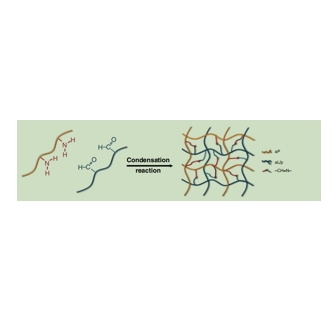文献:
Microenvironment-responsive immunoregulatory electrospun fibers for promoting nerve function recovery
文献链接:
https://www.nature.com/articles/s41467-020-18265-3
作者:
Kun Xi , Yong Gu , Jincheng Tang , Hao Chen, Yun Xu , Liang Wu , Feng Cai , Lianfu Deng, Huilin Yang, Qin Shi, Wenguo Cui, Liang Chen
相关产品:
原文摘要:The strategies concerning modification of the complex immune pathological inflammatory environment during acute spinal cord injury remain oversimplified and superficial. Inspired by the acidic microenvironment at acute injury sites, a functional pH-responsive immunoregulation-assisted neural regeneration strategy was constructed. With the capability of directly responding to the acidic microenvironment at focal areas followed by triggered release of the IL-4 plasmid-loaded liposomes within a few hours to suppress the release of inflammatory cytokines and promote neural differentiation of mesenchymal stem cells in vitro, the microenvironment-responsive immunoregulatory electrospun fibers were implanted into acute spinal cord injury rats. Together with sustained release of nerve growth factor (NGF) achieved by microsol core-shell structure, the immunological fiber scaffolds were revealed to bring significantly shifted immune cells subtype to down-regulate the acute inflammation response, reduce scar tissue formation, promote angiogenesis as well as neural differentiation at the injury site, and enhance functional recovery in vivo. Overall, this strategy provided a delivery system through microenvironment-responsive immunological regulation effect so as to break through the current dilemma from the contradiction between immune response and nerve regeneration, providing an alternative for the treatment of acute spinal cord injury.
PLA在微环境响应性免疫纤维支架中具有应用较广,在实际情况中免疫纤维支架的理化学
通过酸敏感的席夫碱键,将脂质体接枝到定向纤维的表面,为轴突定向生长提供平台,并为引导神经纤维的延伸提供平台,在携带IL-4质粒纤维(MSaP-aL/p)的aPLA微浆纤维表面可以捕获接枝脂质体,以及部分纤维的融合。

图为:氨基聚乳酸微溶胶电纺纤维和醛阳离子脂质体连接示意图。
聚乳酸在不同取向纤维支架的具体制备:静电纺丝溶液装入一个注射器中。静电纺丝过程中针尖与平行电极接收器之间的保持距离。平行取向的纤维支架可以收集在电极棒之间。去除所获得的纤维中残留的溶剂,制备的纤维支架在真空下干燥过夜。同时,获得传统的电纺丝定向纤维(PLA、aP)和微溶胶电纺丝定向纤维(MSaP)。

图为:不同纤维支架的杨氏模量
结论:在PLA上引入亲水性氨基降低支架表面的疏水性,磷脂纤维的接触角降低是由于表面脂质体磷脂的亲水性,并延伸到水相。静电纺丝纤维支架成为组织工程研究热点的优点之一是,它具有较大的孔隙率,可以为细胞提供更多的生长空间。

 2024-12-17 作者:lkr 来源:
2024-12-17 作者:lkr 来源:

